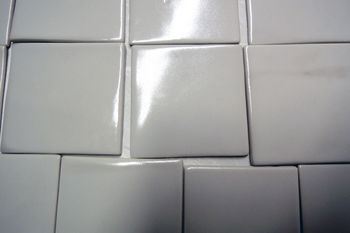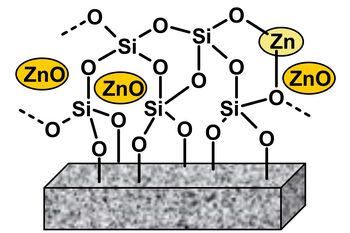Cationic Polymer Layers
The antibacterial effect of cationic polymers is based on their interactions with the negatively charged cell membrane of the bacteria, which lead to the destruction of the cytoplasmic membrane, resulting in the death of the bacterium.
Cationic polymers may either be produced by radical polymerization, followed by covalent chemical bonding to an appropriately functionalized carrier material (e.g. metal surface), or they may be directly applied to the surface of the corresponding materials by means of special surface polymerization (ATR polymerization, NMP process).
Zinc Oxide Based Sol-Gel Layers
Several coating concepts have been developed within the funding program of the German Federal Ministry of Education and Research (BMBF Wachstumskern Technologieplattform „J1013“), which utilize zinc oxide to create permanent antimicrobial properties in various materials, such as glass, porcelain and textiles.
Furthermore, in cooperation with our partners, we have established antibacterial ammonium-containing alkoxysilanes sol-gel systems and developed corresponding coating technologies.
These coatings were successfully tested against gram-positive bacteria, such as Staphylococcus aureus and Staphylococcus epidermidis, as well as against gram-negative bacteria, such as Escherichia coli. Outstanding antibacterial effects were accomplished with these coatings. Cytocompatibility was confirmed by in vitro experiments using a mouse fibroblast cell line.







